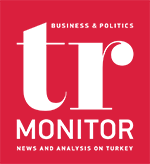Turkey’s macro balances, which started to change especially after the 2009 global crisis, became more fragile with increasing indebtedness due to the debtfinanced growth model of the Turkish economy, which has a significant savings gap. The current account deficit, mainly financed by FDI, tourism and other revenues from Turkish contractors in foreign countries, paved the way for secondary imbalances. Considered as the qualified source of financing, net direct investments fell to USD 3.5bn in the first 11 months of 2019 while real sales to foreigners created USD 3.9bn of the total gross inflows that amounted USD 4.6bn. Net portfolio outflows stood at USD 10.6bn in the same period. All current account deficits with a size of USD 35.2bn closed by reserve assets of the Central Bank at a period when reserve losses reached USD 150bn. The reserve-based financing didn’t stop there; total financing of CBRT reached USD 38.6bn with an outflow of USD 2.9bn in net errors and omissions.
TALIP AKTAS










